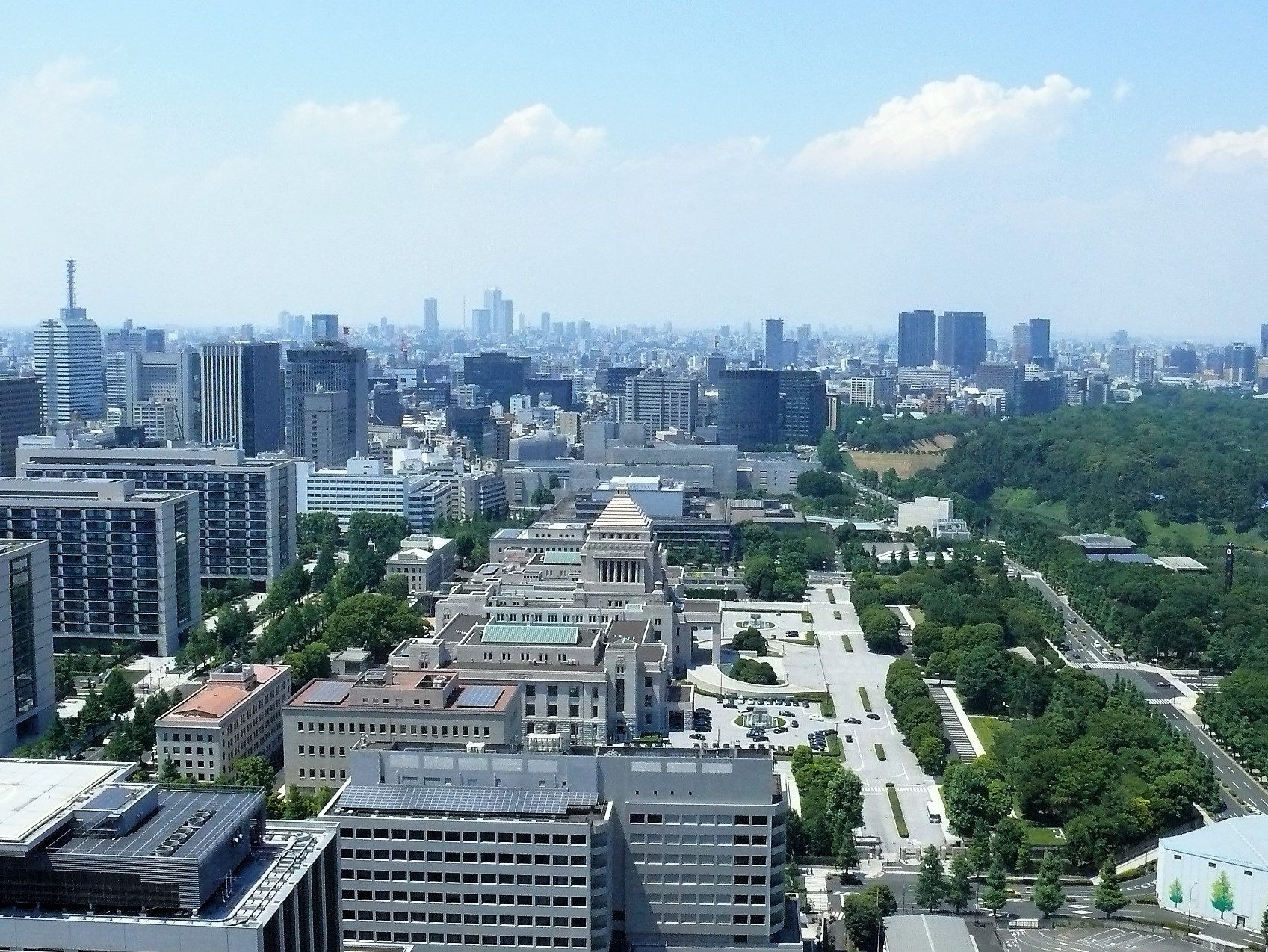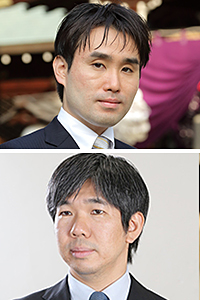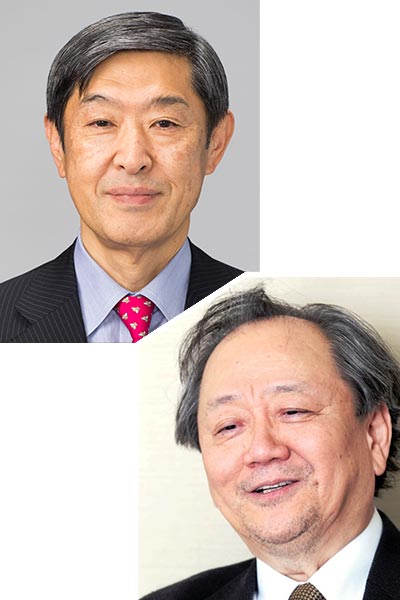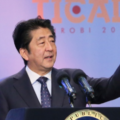The nonconservative alternatives: A bloated ruling coalition, a non-voting electorate—Power and the lack of ism for revitalizing the opposition parties
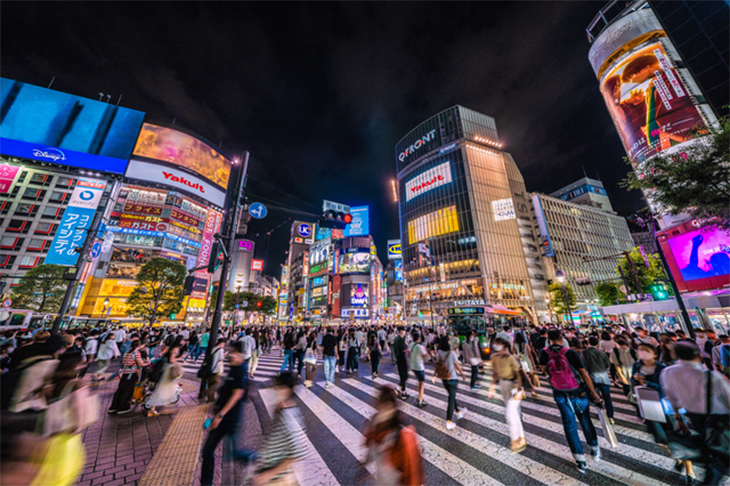
“Does Japanese society really have the flexibility to change itself by drawing on the will of the grassroots? Or, will Japan accelerate its decline by maintaining the current organizational principles?”
Photo: Ryuji / PIXTA
Professor Uno Shigeki (University of Tokyo) vs Professor Nakakita Koji (Hitotsubashi University)
Reflecting on the Upper House election in July 2022
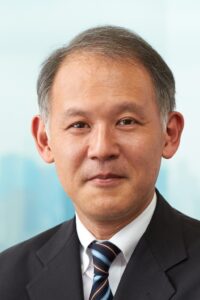
Prof. Uno Shigeki
Uno Shigeki: The Upper House election in July produced a landslide for the ruling coalition, but since the rate of votes obtained by proportional representation has been decreasing little by little with each election, one would have to say that rather than overwhelming support winning the day for the ruling coalition, the opposition parties have self-destructed. The Constitutional Democratic Party of Japan (CDPJ), in particular, has kept its position as the leading opposition party in terms of the number of parliamentary seats, but in terms of proportional representation, it has been overtaken by the Japan Innovation Party (JIP).
The present Upper House election should have been one election, but to me it appears as if two games played out. For the Liberal Democratic Party, it was a question of Prime Minister Kishida Fumio or former Prime Minister Abe Shinzo. The difference between these two [party] lines is an important point, but the choice cannot be made in an election. On the other hand, it is clear that the opposition parties cannot beat the LDP, so one might say that they were fighting for the position as the leading [opposition] party.
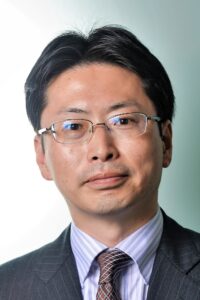
Prof. Nakakita Koji
Nakakita Koji: The opposition parties failed to cooperate adequately in the elections and suffered a crushing defeat, winning only four of 32 single-seat constituencies. That said, the statement by the Japanese Communist Party (JCP) and the Shimin Rengo (Civil Alliance for Peace and Constitutionalism) that the opposition bloc need to fight together is too simplistic.
In the 2021 Lower House election, the CDPJ and JCP agreed to cooperate outside the Cabinet in a limited way, but according to the summary by the CDPJ, this was merely an agreement not to govern together. Moreover, both parties have lost seats so it is clear that any regime change within this framework is futile. This was the point when electoral cooperation between the opposition parties, which started with the campaign to oppose the Legislation for Peace and Security in 2015 and the breakthrough of the Japan Innovation party (JIP), came to a standstill.
On the other hand, a pseudo-regime change occurred within the LDP after the resignation of Prime Minister Suga Yoshihide when Suga’s rival Kishida won the 2021 LDP presidential election, marking a return to an intra-party pluralism reminiscent of the 1955 System. In addition, the alliance with the Komeito, the policy-driven Democratic Party for the People (DPP), and the Japan Innovation Party are in the process of forming a party system similar to the concentric [traditional] Chinese World Order.
In such a situation, there is no sign of revitalization among the opposition parties. Even though restructuring is necessary, the current situation is such that they do not even have the energy to undertake restructuring.
Conservative and conservatism, liberals
—The theme for this discussion is “non-conservatives,” but there is also the question of what conservatives are in the first place.
Uno: I discussed this issue in my book Hoshushugi towa nanika (What is conservatism?), but I think it is doubtful that conservatism in Japan has any ideology that should be protected in the first place. According to Edmund Burke (1729–1779), the statesman and philosopher who is considered the founder of conservatism, the major premise was to protect the liberal system that had been established after the Glorious Revolution (1688–1689) in Britain. In this respect, Japan’s conservatives have not clarified what kind of political system should be protected, or what systems, traditions, or values to retain.
Nakakita: In other words, conservative as political power, and conservatism as political thought are different. Japan also has a political power that refers to itself as conservatives, but conservatism can only be found within a narrow scope.
Uno: The concept of conservatism is clear when the enemy is well defined. Everything was fine when the conservatives opposed the French Revolution, socialism, or Big Government, but as soon as the opposing side becomes blurred, the conservatives no longer understand what should be maintained.
The term liberal, which is often used as a counter to conservative, is also ambiguous, and I believe this is something we need to reconsider. If conservatives value the in-group and people of the same nationality, it follows that liberals adopt a universal position that cares about minorities and diversity. Therefore, they are likely to remain opposed to conservatives in the future as well. So, there must be a raison d’être for liberalism in the sense of recognizing diverse ways of life.
Nakakita: In postwar Japan, reformist is the opposite concept to conservatives as a political power. In contrast to the conservatives in the LDP who approved the Japan-US Security Treaty and advocated capitalism, the SDPJ and JCP, among others, were reformists who opposed the Japan-US Security Treaty and leaned toward socialism. The confrontation between conservatives and reformists ended with a near decisive victory for the conservatives in the late 1970s. A victory that was then confirmed in the late 1980s with the end of the Cold War.
On the other hand, the political power that has protected the postwar values embodied in the Constitution of Japan is liberal. There are non-liberals among both conservatives and reformists, and they were even the mainstream for a while after the end of the war. The LDP advocated the enactment of an autonomous constitution whereas the JCP opposed the new Constitution [enacted in 1947].
The turning point came with the protests against the Japan-US Security Treaty in 1960. The pro-American conservatives, the so-called New Right, including Miyazawa Kiichi (1919–2007) of the Kochikai faction [of the LDP], which supported the Ikeda Hayato (1899–1965) administration, postponed the constitutional amendment. Liberals emerged in both the conservative and reformist camps with Eda Saburo (1907–1977) and other members of the right wing of the Social Democratic Party of Japan (SDPJ) insisting on “full implementation of the Constitution.”
In the 1980s, the Kochikai faction and other liberal conservatives within the LDP prevailed over the right wing of non-liberal conservatives, who insisted on the enactment of an autonomous constitution. This is precisely the position of conservatism in postwar Japan. In 1989, Shirakawa Katsuhiko (1945–2019) of the Kochikai faction published a book entitled Tatakau riberaru (Fighting liberals).
In addition, when the Cold War ended, there was a conversion toward social democratic liberals among the reformists, who had lost their appeal.
Uno: I mostly agree. There used to be an opposing axis of conservatives and reformists in postwar Japan, but it has gradually turned into conservatives and liberals. I think it is important to clarify what the current liberals have inherited from the reformists, or whether the reformists have simply rebranded themselves as liberals. Essentially, conservative and liberal are not opposing concepts. The idea is that conservatism maintains and develops what is valuable in the present system, so the opposite would be radicalism. Liberal, on the other hand, respects personal freedom and diversity, so the opposite would be some kind of authoritarianism, or ideas that suppress the freedom of the individual. It would not necessarily be conservatism. The confusion arises when the US concept of a conflict between conservatives like the Republicans, and liberals like the Democrats, with freedom as a shared principle, is mechanically applied to Japan.
Adhering to the postwar Constitution of Japan [enacted in 1947] while expanding its principles of freedom is close to the essence of conservatism. The traditions of the Kochikai faction are closer to liberal-conservative. I believe that the Kochikai faction is one point when considering the significance of liberal in Japan. But, the traditions of the Kochikai faction ended with the demise of the Miyazawa Kiichi administration, and with the Kato rebellion in 2000 (when former LDP Secretary-General Kato Koichi (1939–2016) rebelled against the Mori administration). Since then, the Kochikai faction has lost its vitality. It is often claimed that Prime Minister Kishida is a member of the Kochikai faction, but how much continuity is there with the Kochikai faction as it once was, and where are the differences? This is something that must be properly discussed.
Nakakita: Prime Minister Kishida’s attitude to constitutional revision is likely to be a litmus test.
However, seeing how postwar values have taken root in Japanese society of today, I think that the liberal conservatives have had a major role in suppressing the right wing that aimed for a return to the pre-war days.
Are young people becoming more conservative?
— Is there a link between the stable expansion of the ruling coalition’s political power and the tendency of young people to become more conservative and stability-oriented? Are young people become more conservative in the first place?
Uno: I have looked at various surveys without finding any clear sign that young people today are becoming conservative.
The reason young people appear to become conservative is that their connections to political parties have weakened. Japan is essentially a weakly organized country where political parties have shallow roots, but there is a particularly great sense of distance between young people and political parties. They don’t see the point of voting, and casting a ballot for some political party also feels unreal. People still vote for the ruling coalition, so it looks as if they are becoming more conservative but they no longer understand the significance of voting for the opposition parties. Many young people are interested in society, and many people want to be useful in society, but they have no interest in politics and they do not want to get close to politics. Many young people find politics scary.
Nakakita: As long as we look at opinion surveys, there is hardly any indication that the citizenry as a whole is leaning to the right. When same-sex marriage, the elective surname system, or other contentious issues involving traditional values are concerned, the shift to the left is focused on young people.
If there has been a shift to the right, it is in politics. When the LDP was in opposition to the liberal Democratic Party of Japan (DPJ), the right wing of the party started to reemphasize the party principle of enacting an autonomous constitution, and with the failure of the DPJ administration, politics as a whole shifted to the right as a result of the ikkyo (the political dominance) of the LDP. However, I believe it is commonly accepted among analysts that the party has become estranged from the awareness of the electorate.
In short, it is not the electorate that is leaning to the right, rather, I think the biggest problem is that the political parties left of center have weakened. No matter how correct your opinion, it will not be realized if the party is weak. In contrast, the LDP is unfettered and flexible, and in any case strong. Far from changing as a result of the political reforms since 1994, these structures are more conspicuous.
In the past, the left wing had a strong presence because of the appeal of Marxism and other isms. However, such intellectual advantages have also been completely lost by now. This is probably the main reason the left wing is no longer able to attract young people.
Why Karl Marx now?
Uno: In contrast with the devastating situation for the left wing in the elections and in realpolitik, there is a tendency in the mass media to reinstate Marx, as Saito Kohei, Associate Professor at the University of Tokyo, writes in Hito shinsei no shihon-ron (Capital in the Anthropocene [English version to be published in 2023]).
I believe that there is a historic inevitability to the reinstatement of Marx. By which I mean that in the 1970s and 1980s, new values emerged in the post-industrial society, and the left wing also became interested in the cultural domain. The potential of culture to criticize the nature of political power drew their attention.
Incidentally, since the start of the 21st century, widening disparity has trailed in the footsteps of globalization with increased focus on the classical mechanism of production, logistics, and distribution. When economic structures are reconsidered in macroscopic terms, it is natural that the focus will return to Marx. Of course, I do not believe that Marx’s theories will be reinstated as they stand. How do we read Marx in a modern way? In particular, how we relate Marx’s criticism of private property rights to ideas about justice, fairness, and the commons is important.
However, there are also aspects of this movement that compensate for the inability to change modern society. It is a hard fact that the left wing is in a state of collapse, and precisely because there are no prospects for turning the situation around at the party political level, we are seeing a major ideological shift toward fundamental criticism of capitalism, which is far more hopeful than realpolitik. However, I fear that it could end up being no more than an intellectual fad.
Nakakita: Saito asserts that a type of commons society opposed to capitalism will save the world. If this becomes a force with political power in Japan, I think that the developed countries in the West that are trying to make this reality will be seen as models. Practices such as the “degrowth communism” in Barcelona that Saito refers to in his book are still in their infancy. If they grow and develop, I believe there will be an increase in areas that are connected to politics.
Nonetheless, I believe the questions that Saito raises are extremely important. Even so, the response from the JCP, the standard-bearer for communism, is close to negligible. It is very disappointing.
Exactly the same holds true with regard to my book Nihon kyosanto (The Japanese Communist Party). There has not been any constructive rebuttal, or criticism in the vein of Inu wa hoetemo rekishi wa susumu (the dogs bark, but history goes on), published in the Shimbun Akahata party organ in 1977 as a rebuttal to criticism of the party at the time. I sent a copy to JCP Chairman Shii Kazuo, one of the interviewees, but I have heard nothing back from him. It feels as if the left wing has lost its intellectual superiority without the controversies of the past.
What will it take for the left wing to regain its dynamism?
Uno: I thought your book on the Japanese Communist Party raised some extremely important issues.
From the standpoint of interparty cooperation, the JCP has certainly to some degree compromised on the Japan-US Security Treaty, including the Self‐Defense Forces (SDF) and Article 9. However, there has not been much change at the fundamental level. Even if an opposition coalition government is formed, there will be an instant deadlock. In your book, you clearly explain that unless the JCP faces up to the Japan-US alliance and the role of the SDF, it will be difficult to present a more united front.
Nakakita: The book is selling better than I expected and I have also had some responses from party members. Probably because there is a strong sense within the party of being in a bind with regard to the current situation at the JCP. The organizational principle at the JCP is democratic centralism, but it is difficult to openly state objections to the central party organization. Also, there has been no change in leadership, and Chairman Shii has held his post for more than twenty years.
Many books are simply anti-communist, but I wrote this book to try to raise issues in a constructive manner. Amid deepening disparity, the JCP and other left wing parties have to regain their vitality. The current situation is quite difficult and I wrote the book from the perspective of what they need to do to regain vitality.
―With regard to the security of Japan, there is no longer major antagonism between the conservatives and the reformists, and it is more difficult for non-conservative influences to distinguish themselves from the conservatives. Perhaps this is another reason for the lack of energy?
Uno: Today, the main issue for opposition supporters is the intergenerational differences in values. The Constitution and security are still the most important issues for opposition supporters older than fifty. However, people under thirty are interested in disparity, how to protect their own livelihoods and jobs, and what parties think about the issue of redistribution through socio-economic policies amid depopulation and other signs of stagnation in Japanese society, rather than the Constitution and security. There is considerable discrepancy between the generations.
What makes it tough for the CDPJ is that the party is to some degree responding to the issue awareness of the older generations, but where the younger generation is concerned, they have not been able to come up with an attractive plan that can oppose Abenomics with regard to finance, economy, social security, or the kind of life they can expect.
I think revitalization will be difficult unless a new left wing doctrine is worked out to link the issues of the Constitution and security with the issues of finance, economy, and social security.
The dilemma for the CDPJ
Nakakita: The CDPJ is really in a difficult position. Since they are the leading opposition party aiming for political power, they have to develop an assortment of policies, but they find themselves in the same situation as a department store without any attractive goods. The assortment they offer in the top-selling lines of diplomacy, security and economy is too meagre to replace the LDP. The electorate tends to turn to the specialty shops of the JIP, DPP, Reiwa Shinsengumi, and the Social Democratic Party, which are also opposition parties because their policies look incisive and it is easy for the party leaders to show a level of commitment.
Since the CDPJ cannot become a specialty shop as long as it is the leading opposition party, their only option is to increase the attraction of regime change. For example, by merging with their former party colleagues in the DPP or strengthening cooperation with Rengo (the Japan Trade Union Confederation). In terms of policy, the party is improving in fields such as the environment, gender and social security while changing the content of its policies in the fields of diplomacy, security and economy to appeal to a majority of the electorate. By doing this, they are showing that they are serious about regime change. It is difficult, but I don’t think there is another way.
Uno: The CDPJ is indeed at a crossroads. They have sustained the goal of becoming the party they need to be for regime change to be possible, but regime change is receding even further away, and they are exposed to this contradiction.
The DPJ was, basically, a hotchpotch party that included everything from conservatives to liberals. In 2017 when the CDPJ emerged from the confusion around the merger of the Party of Hope and the Democratic Party, the mission should have been to take the middle road based on the criteria of the left liberal class, but in the end, they did not. Instead, the party faded when the LDP seized the middle road.
If the party aims to rebuild itself as a specialty shop that only provides for left-wing or liberal bedrock supporters, it will end up further removed from the mechanism for regime change. This is the critical moment for today’s CDPJ. Will the party continue to develop as a specialty shop protecting its own base, or will they once again broaden the foundations?
Nakakita: Regional organizations could also be upset in the run-up to nationwide local elections in the spring of 2023. Looking at the proportion of members of a prefectural assembly, the LDP has maintained around 50% in the past thirty years. The DPJ retained about 16% during the years of the DPJ administration (2009–2012), but the LDP still had one third. Since then, the party’s share has not only declined significantly, but the party has also split into the CDPJ and the DPP. The situation is actually deplorable.
Uno: There are no easy prospects for revitalization of the opposition parties. As long as the ruling coalition is doing well, it doesn’t matter if the opposition is no good, but there is a problem because the ruling coalition is not doing well.
The Constitution as the focus of confrontation
Nakakita: The situation around the Constitution has also changed. As mentioned earlier, many political parties were skeptical immediately after the Constitution of Japan was completed. The JCP was not the only party to object, initially, the SDPJ also agreed that the Constitution would change once Japan had moved to socialism because it was a bourgeois constitution that had provisions for property rights.
However, as the movement by conservatives to return to prewar Japan grew stronger, the SDPJ developed a campaign to clarify its position on protecting the Constitution. Partly because of this pressure, the LDP also revised the Japan-US Security Treaty within the framework of the Constitution, and established defense capabilities. After the 1960 protests, both reformists and conservatives tended to see the Constitution in a more positive light. When the LDP formed a coalition government with the SDPJ in 1994, the party principle of enacting an autonomous constitution was shelved when the platform was revised the following year. For a short time, a liberal consensus formed on the impossibility of a constitutional revision to return to prewar Japan. However, eventually there was a backlash. It was led by former Prime Minister Abe and others on the right wing.
It should be noted that it was neither constitutional protection nor constitutional revision that separated the liberals and the right wing, but whether or not to take an affirmative view of the current Constitution. For example, Komeito, which has advocated for adding new principles to the Constitution, should be positioned as liberals. Of course, liberals are also in favor of protecting the Constitution. In 2004, the JCP revised its platform to clarify its stance on protecting the Constitution. In the end, the seven years of the second Abe administration provided a return to a liberal consensus. Not only was the Constitution not revised, but to win the support of Komeito, the LDP proposed a clause about the SDF to be added to the Constitution. As a result, the enactment of an autonomous constitution was effectively abandoned. I believe the relative importance of the focus of confrontation around the Constitution has weakened considerably.
Uno: In your opinion, there is not as much conflict over the Constitution and security as there used to be, but I think that some conflict still remains.
On security matters, the consensus is no doubt that there is no alternative to getting along with the United States. But, despite the premise of the alliance with the United States, I think there are still important points with regard to positioning the relationship with the United States where the right of collective self-defense and other issues are concerned.
Nakakita: The movement opposing the 2015 Legislation for Peace and Security was more about the Constitution than the Japan-US alliance. Suspicions that the Abe administration was trying to invalidate the Constitution of Japan by reinterpreting the Constitution, and, as was the case at the time of the protests in 1960s, wariness of a right wing that aimed for a return to prewar Japan provoked large demonstrations.
However, I think the situation changed when Prime Minister Abe turned away from adding the SDF clause, and when the Kishida administration emerged from the Kochikai faction. There are still issues about the capability to attack enemy bases (capability to mount counter attacks), and with the death of Abe, I suspect these tendencies will grow stronger in the future.
Is constitutional amendment possible under the Kishida administration?
Uno: To achieve constitutional amendment, you need a process that takes the time to build agreement across factions. The dilemma for the Abe administration was that although they wanted to revise the constitution, they prioritized frequent dissolution of the Diet to beat the opposition in elections. As a result, nonpartisan agreement for constitutional amendment fell through immediately. In one sense, the Abe administration itself obstructed the path to constitutional amendment.
Although Prime Minister Kishida has filled two thirds of all seats in the Upper House with the forces for a constitutional revision, I do not believe that they will make an immediate move toward constitutional amendment.
Nakakita: Even if the so-called forces for constitutional revision settle the general terms for constitutional amendment, enthusiasm is mixed and there is no agreement on which clauses to amend. If even Abe’s long-term stable administration did not succeed, it seems unlikely that it will happen immediately just because the Kishida administration is in power. Even if, for argument’s sake, some progress is made, it will likely be no more than minor amendments within the framework of the current Constitution.
At this stage, people are also skeptical of the idea that constitutional amendment is important for defining Japanese politics. Even if people are not opposed to constitutional amendment, I think that most of the nation feels that there must be more important things to do such as countermeasures to the falling birthrate, digitalization, and decarbonization.
The new left and liberal force
― Is it possible that something like a new left or liberals will emerge?
Uno: In the past, social democracy was an alternative. There were movements that placed an extremely strong emphasis on financial and social security, and rectifying unequal access to opportunities through redistribution. However, today there is not much money to spare for social security, and it has become difficult to tell to what extent unequal access to opportunities will be rectified.
Meanwhile, property tax and financial income tax is turning into a major issue for the future. However, since this is not something one country can do on its own, I believe that redistribution based on global property tax will become important in the future.
To start with, when considering the nature of ownership rights, there is, on the one hand, the libertarian thinking that treats ownership as an absolute, but the arguments for reorganizing society based on sharing and relative ownership rights are also growing increasingly influential.
Broadly speaking, I think the idea that it is necessary to revitalize socialism in a modern guise will emerge in the future. We need to restore a healthy debate in the space between social democracy and liberalism, which try to achieve socialism through parliamentary democracy, and neoliberalism (advocates of small government, privatization), which is opposed to both social democracy and liberalism. I think it will be important to have these discussions in the future.
Nakakita: For the time being, the outlook is gloomy for the left wing, which finds itself in a dark period. As I wrote in my book, the trigger to break the deadlock is for the JCP to make a bold change of course.
One option is to shift to a center-left social democracy like the Italian Communist Party (PCI) has done. If the party stops viewing the United States, major corporations and the financial world as enemies, they could form a solid opposition bloc with the CDPJ and other parties to rival the LDP and Komeito coalition, and open up the path to delivering regime change.
Another option is a switch to left-wing democratic socialism. Adopting a left populism strategy on a platform similar to Jean-Luc Mélenchon in France or Bernie Sanders in the United States would appeal to young people.
In any case, it is essential for the JCP to revise democratic centralism and to generate vitality based on diversity within the party. The first step would be a direct vote by party members when electing the party leader.
Populism is weak in Japan
―In Europe, center-left political parties are retreating while the extreme left and the extreme right are gaining strength. Could this also happen in Japan?
Uno: In France, the centrist parties have nearly disappeared with the Socialist Party suffering a crushing defeat in the previous presidential election [2017], and the right-wing Republicans crushed in the 2022 presidential election.
In comparison, the stability in Japan is attracting attention around the world. In the 2010s, in particular, the LDP was overwhelmingly strong and stable. However, I think it should be pointed out that the situation stagnated for a lack of energy to create focal points for discussion. On the face of it, I think it is significant that the right-wing Prime Minister Abe focused his power on socio-economic policy for the middle class.
Nakakita: Since the sovereignty of the European countries is circumscribed by the EU and the migrant problems are becoming more serious, the radical left, which opposes global capitalism, and the extreme right, which calls for the expulsion of migrants, have the momentum. Japan, on the other hand, has retained its sovereignty and there is no worsening migration problem, so the conditions for populist parties to rise on either the left or the right are relatively scarce. Moreover, I believe that the LDP is gathering support, and that people are satisfied with the current situation in Japan if only for the half-hearted reason that it is better than the confusion that has engulfed the West.
Uno: In the Upper House election, the Sanseito captured more of the number of votes cast for proportional representation than the NHK Party. I was surprised to see how much they increased their share of the votes. With its anti-vaccine arguments, the Sanseito actually seems to be a new trend that we have not seen before.
Nakakita: Many organizations including the industry groups backing the LDP, Rengo, which supports the CDPJ and DPP, and Soka Gakkai, which endorses the Komeito, reduced the votes. Even though the fuel for populism has increased considerably, it is perhaps possible that no political actors have ignited it. As of now, independent voters are abstaining.
Uno: It is also possible that it is not even possible to generate dynamism because of the solidness of the aging organizations that remain in the middle.
Nakakita: Another ten years. In ten years, the support base for the principal political parties, i.e., the people who are now in their 60s and 70s, will exit the stage and the political climate will be different from the current one. However, it worries me because politics is bound to become unstable.
Uno: But once those ten years have passed, Japan will without doubt have accomplished nothing. We mustn’t sit around and wait for death, rather, we have to take some course of action before then.
These days, we have to think about how to maintain Japanese society while accepting that the population is in decline, and how to become sustainable. I believe that influences with the ability to look beyond ideology to come up with a plan to resolve these issues, and to provide some insight into what responses are possible, will seize the next possibility.
Nakakita: Given the potential for the LDP to stumble and fail, looking reality in the face and envisioning solid reform proposals may be the shortcut that will revive the left of center.
Uno: The issues have been crystal clear for the past twenty years or so, but Japan has not been able to do anything at all.
People say that the politicians are bad, or that the electoral system is bad, but surely that is not all. There are major problems with the organizational principles in Japanese society. For example, why is Japan the only country where the leadership is dominated by the elderly in their 70s and 80s when the leaders of other countries are in their 40s? The situation has come up against its limits.
Does Japanese society really have the flexibility to change itself by drawing on the will of the grassroots? Or, will Japan accelerate its decline by maintaining the current organizational principles? I believe we are now at this crossroads.
Moderated by Toya Koichi
Translated from “Tokushu ‘Hi-Hoshu toiu Sentaku’: Bocho suru Yoto, Kikensuru Yukensha…—Yato Saisei ni tarinai Izumu to Tsuyosa (Special ‘The nonconservative alternatives’: A bloated ruling coalition, a non-voting electorate—Power and the lack of ism for revitalizing the opposition parties),” Chuokoron, October 2022, pp. 18–29 (Courtesy of Chuo Koron Shinsha) [November 2022]
Keywords
- Uno Shigeki
- University of Tokyo
- Nakakita Koji
- Hitotsubashi University
- Liberal Democratic Party (LDP)
- Constitutional Democratic Party of Japan (CDPJ)
- Japan Innovation Party (JIP)
- Japanese Communist Party (JCP)
- Shimin Rengo
- Democratic Party for the People (DPP)
- Reiwa Shinsengumi
- Social Democratic Party (SDP)
- Sanseito
- NKK Party
- Rengo (Japan Trade Union Confederation)
- Soka Gakkai
- Hoshushugi towa nanika (What is conservatism?)
- conservative
- liberal
- reformist
- communist
- ikkyo
- Marxism
- Saito Kohei
- Hito shinsei no shihon-ron (Capital in the Anthropocene)
- Nihon kyosanto (The Japanese Communist Party)
- Constitution
- security
- Self-Defense Forces
- Japan-US Security Treaty
- populism
- center-left
- centrist

